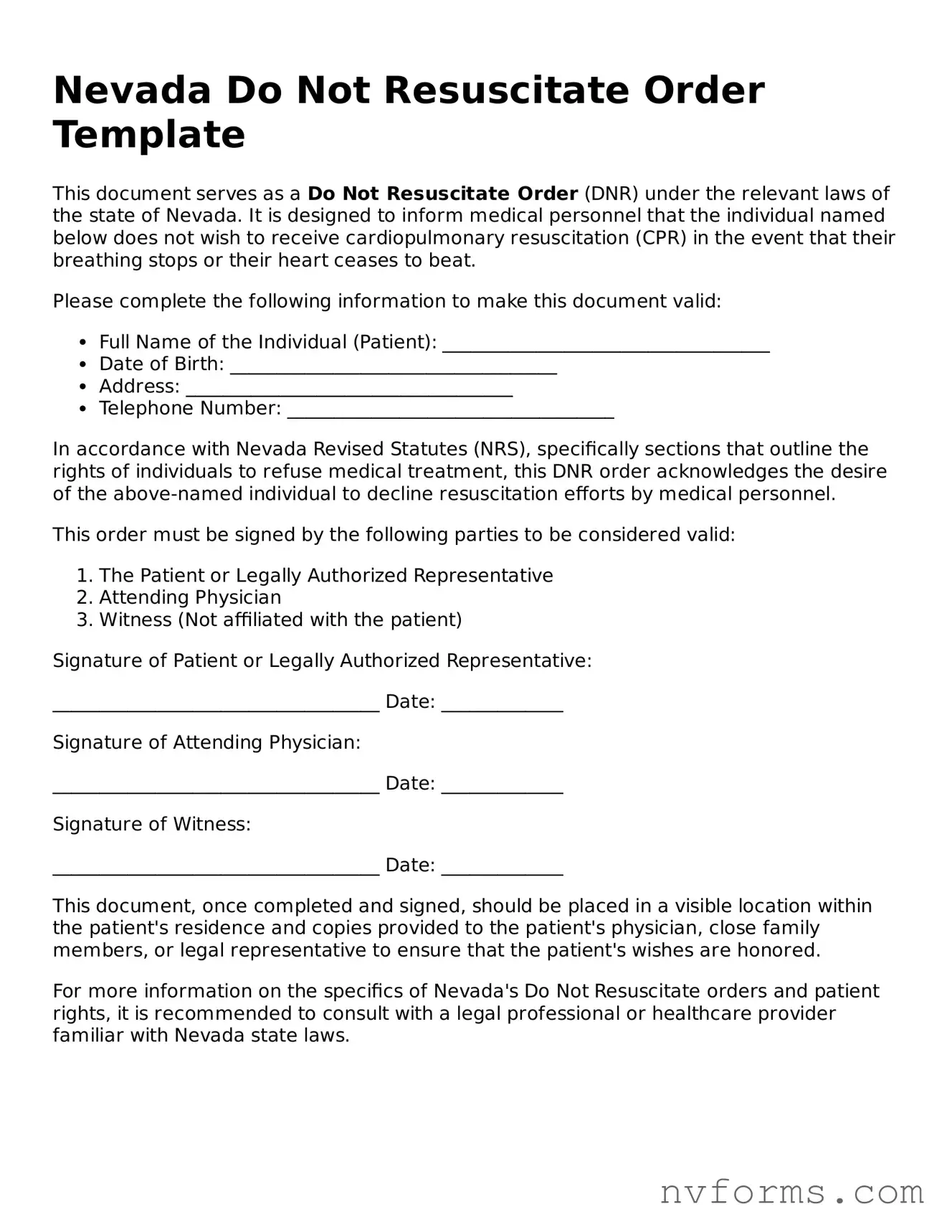Nevada Do Not Resuscitate Order Template
This document serves as a Do Not Resuscitate Order (DNR) under the relevant laws of the state of Nevada. It is designed to inform medical personnel that the individual named below does not wish to receive cardiopulmonary resuscitation (CPR) in the event that their breathing stops or their heart ceases to beat.
Please complete the following information to make this document valid:
- Full Name of the Individual (Patient): ___________________________________
- Date of Birth: ___________________________________
- Address: ___________________________________
- Telephone Number: ___________________________________
In accordance with Nevada Revised Statutes (NRS), specifically sections that outline the rights of individuals to refuse medical treatment, this DNR order acknowledges the desire of the above-named individual to decline resuscitation efforts by medical personnel.
This order must be signed by the following parties to be considered valid:
- The Patient or Legally Authorized Representative
- Attending Physician
- Witness (Not affiliated with the patient)
Signature of Patient or Legally Authorized Representative:
___________________________________ Date: _____________
Signature of Attending Physician:
___________________________________ Date: _____________
Signature of Witness:
___________________________________ Date: _____________
This document, once completed and signed, should be placed in a visible location within the patient's residence and copies provided to the patient's physician, close family members, or legal representative to ensure that the patient's wishes are honored.
For more information on the specifics of Nevada's Do Not Resuscitate orders and patient rights, it is recommended to consult with a legal professional or healthcare provider familiar with Nevada state laws.
